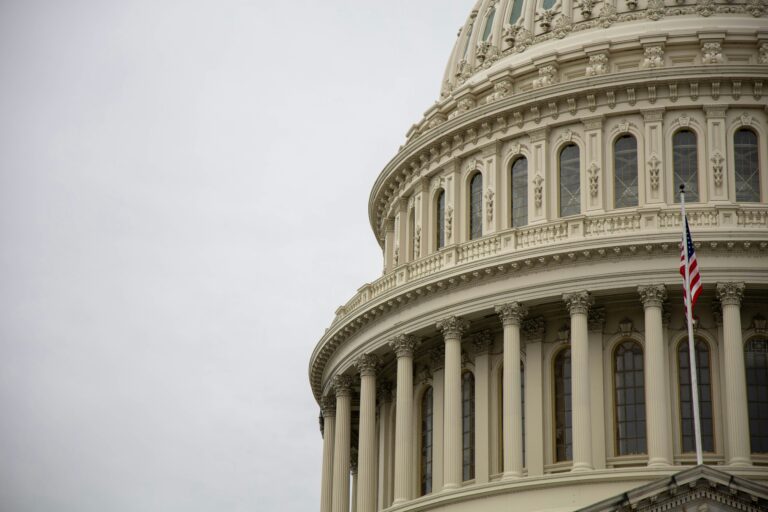
Introduction
The criminal justice system is meant to uphold justice, ensure public safety, and rehabilitate offenders. However, it is no secret that significant inequalities exist within this system. Over the past few decades, the disparities in sentencing, policing practices, and prison conditions have led to calls for comprehensive criminal justice reform. In this article, we will analyze recent efforts to reform the criminal justice system, focusing on issues like sentencing disparities, policing reform, and improvements in prison conditions. We will also discuss the challenges and successes of these reform initiatives and how they are shaping the future of justice in America.
Sentencing Reform: Tackling Disparities
One of the primary concerns within the criminal justice system is the issue of sentencing disparities, particularly those based on race and socio-economic status. Minority groups, especially Black and Hispanic individuals, are disproportionately affected by harsh sentencing laws and mandatory minimums. The “War on Drugs” era saw a sharp increase in mandatory sentencing for non-violent drug offenses, disproportionately impacting communities of color.
In recent years, efforts to reform sentencing laws have gained momentum. The passage of the First Step Act in 2018 marked a significant milestone in federal sentencing reform. The law aimed to reduce mandatory minimum sentences for certain non-violent offenses, provide more opportunities for early release, and promote rehabilitation programs within prisons. By addressing some of the harshest aspects of federal sentencing laws, the First Step Act has helped reduce the number of people serving excessively long sentences for non-violent offenses.
Despite these reforms, challenges remain. Many states have yet to adopt similar measures, and disparities persist in how sentences are handed down. The push for more comprehensive sentencing reform continues, with advocates calling for the elimination of mandatory minimums, greater judicial discretion, and the use of alternatives to incarceration for non-violent offenders.
Policing Reform: Building Trust and Accountability
Policing practices have come under intense scrutiny in recent years, particularly following high-profile incidents of police violence against unarmed civilians. The deaths of George Floyd, Breonna Taylor, and many others have sparked widespread protests and demands for policing reform. The Black Lives Matter movement has played a significant role in bringing attention to issues of police accountability, racial profiling, and the need for systemic change.
Efforts to reform policing have taken many forms, from local initiatives to federal proposals. Some of the key reforms include:
- Body Cameras: The use of body-worn cameras by police officers has been widely adopted as a tool to increase transparency and accountability. Body cameras can provide an objective record of interactions between police and civilians, helping to reduce instances of misconduct and build public trust.
- De-escalation Training: Many police departments have begun implementing de-escalation training programs to teach officers how to defuse tense situations without resorting to force. These programs emphasize communication, empathy, and non-lethal tactics as alternatives to the use of force.
- Civilian Oversight: Civilian oversight boards have been established in several cities to provide independent review of police conduct. These boards are intended to increase accountability and ensure that incidents of misconduct are thoroughly investigated.
- Ending Qualified Immunity: Qualified immunity is a legal doctrine that shields police officers from being held personally liable for actions performed in the line of duty, unless they violated “clearly established” rights. Critics argue that qualified immunity has made it difficult to hold officers accountable for misconduct. Some lawmakers have proposed ending or reforming qualified immunity to ensure that victims of police violence can seek justice.
While these reforms have shown promise, there is still much work to be done to address systemic issues in policing. Building trust between law enforcement and the communities they serve is essential for effective policing, and achieving this will require sustained efforts to address racial bias, increase accountability, and ensure that officers are held to the highest standards of conduct.
Prison Reform: Improving Conditions and Promoting Rehabilitation
The United States has one of the highest incarceration rates in the world, with millions of individuals currently held in federal, state, and local correctional facilities. Overcrowding, inadequate healthcare, and poor living conditions are just some of the challenges faced by those who are incarcerated. Additionally, the focus on punishment rather than rehabilitation has led to high recidivism rates, with many individuals reoffending after their release.
Recent efforts to reform the prison system have focused on improving conditions, expanding access to rehabilitation programs, and providing better support for individuals reentering society. Some of the key initiatives include:
- Reducing Overcrowding: The First Step Act and other sentencing reforms have helped reduce the prison population by allowing early release for non-violent offenders and providing alternatives to incarceration. However, overcrowding remains a significant issue in many facilities, particularly at the state level.
- Access to Healthcare: The COVID-19 pandemic highlighted the inadequate healthcare infrastructure in many prisons, with incarcerated individuals facing higher risks of infection and limited access to medical care. Efforts to improve healthcare in prisons include expanding access to mental health services, substance abuse treatment, and ensuring that incarcerated individuals receive necessary medical care.
- Rehabilitation and Education Programs: Providing incarcerated individuals with access to education, job training, and rehabilitation programs is essential for reducing recidivism and helping them successfully reintegrate into society. Initiatives like the Second Chance Pell Program, which provides Pell Grants for incarcerated individuals to pursue higher education, have shown promise in reducing reoffending rates and improving post-release outcomes.
- Restorative Justice: Restorative justice programs focus on repairing the harm caused by criminal behavior through dialogue between offenders, victims, and the community. These programs aim to promote accountability, healing, and reconciliation, and have been implemented in some jurisdictions as an alternative to traditional punitive measures.
Challenges and the Path Forward
While recent reforms have made progress in addressing some of the inequalities within the criminal justice system, significant challenges remain. One of the primary obstacles to meaningful reform is the fragmented nature of the U.S. criminal justice system, with federal, state, and local jurisdictions each having their own laws, policies, and practices. This fragmentation can make it difficult to implement consistent reforms nationwide.
Another challenge is the political polarization surrounding criminal justice issues. While there is broad bipartisan support for certain reforms, such as reducing sentences for non-violent offenses and expanding rehabilitation programs, other issues—such as policing reform and ending qualified immunity—remain highly contentious. Building consensus and finding common ground will be essential for enacting comprehensive reform.
Additionally, addressing the root causes of crime, such as poverty, lack of access to education, and mental health issues, is crucial for reducing incarceration rates and promoting public safety. Criminal justice reform cannot be achieved in isolation; it must be part of a broader effort to address social and economic inequalities that contribute to crime in the first place.
Conclusion
Criminal justice reform is a complex and multifaceted issue that requires a comprehensive approach to address the inequalities that exist within the legal system. Recent efforts to reform sentencing, policing, and prison conditions have shown promise, but there is still much work to be done to create a system that is fair, just, and effective for all individuals.
By focusing on reducing disparities in sentencing, increasing accountability in policing, and improving conditions within prisons, policymakers can work towards a criminal justice system that upholds the values of fairness and equality. Ultimately, meaningful reform will require collaboration between lawmakers, community leaders, and advocates to ensure that every individual is treated with dignity and respect, and that the justice system serves the needs of all members of society.




